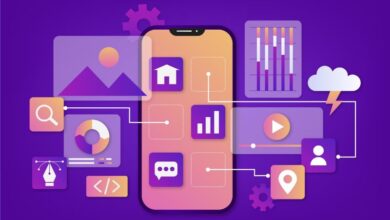The Role of IoT Development Services in Shaping the Future of Smart Cities

In the ever-evolving technological landscape, the Internet of Things (IoT) has emerged as a powerful force driving digital transformation across industries. Among the most impactful areas of application is smart city development. Cities around the world are becoming more interconnected and intelligent through the use of IoT, creating urban environments that are more efficient, sustainable, and livable. To bring these ambitious visions to life, IoT development services play a crucial role in the design, implementation, and scaling of the technologies that underpin smart cities.
In this article, we will explore how IoT for smart cities is driving innovation and reshaping urban living, the key benefits, real-world use cases, and the importance of partnering with a professional IoT development team to deliver these advanced solutions.
The IoT Revolution in Smart Cities
Smart cities rely on a network of connected devices, sensors, and systems that communicate with each other to gather, process, and share real-time data. This connectivity allows cities to manage resources more efficiently, reduce environmental impact, enhance public safety, and improve the overall quality of life for citizens. From traffic management and waste disposal to energy consumption and public services, IoT for smart cities transforms traditional urban challenges into opportunities for innovation.
A Data-Driven Approach
At the core of any smart city lies the ability to collect, analyze, and act upon vast amounts of data. IoT devices—ranging from smart meters to connected streetlights—generate real-time insights that help city authorities make informed decisions. For instance, data from IoT sensors can optimize traffic flow, reduce congestion, and minimize pollution levels, all while improving public transportation systems.
IoT technology also enables predictive maintenance of critical infrastructure, such as water pipelines, bridges, and roads. With sensors in place to monitor wear and tear, cities can address issues before they turn into costly, large-scale problems. This proactive approach helps to extend the life of urban assets while reducing maintenance expenses.
Sustainability and Energy Efficiency
A major driver behind smart city initiatives is the push for sustainability. Cities consume vast amounts of energy, and IoT solutions offer a way to monitor and reduce this consumption. By deploying smart grids, IoT-enabled energy meters, and automated lighting systems, cities can significantly cut down on energy waste. Smart grids, for example, use IoT devices to balance energy demand with supply, reducing the strain on electrical grids during peak hours and ensuring a more reliable power distribution system.
In addition, IoT-based water management systems help cities monitor water usage and detect leaks in real time. By conserving resources and improving efficiency, smart cities contribute to a greener future.
Key Applications of IoT Development Services in Smart Cities
The successful implementation of IoT for smart cities requires the expertise of IoT development services. These professionals design, develop, and deploy the connected systems and applications necessary to transform urban environments. Below are some of the most prominent use cases that are driving the growth of smart cities:
1. Smart Traffic and Transportation Systems
Traffic congestion is a significant issue in urban areas, leading to increased pollution, wasted time, and frustration for commuters. IoT-enabled traffic management systems use real-time data from connected vehicles, road sensors, and traffic cameras to optimize the flow of traffic. By analyzing patterns and providing dynamic traffic light control, these systems help to reduce congestion, minimize accidents, and improve overall road safety.
Public transportation systems are also enhanced through IoT development services. By integrating IoT with buses, trains, and other forms of public transport, cities can offer real-time updates on arrival times, delays, and capacity. These services make public transport more reliable and appealing, encouraging more people to opt for it over private cars, which in turn reduces traffic and emissions.
2. Smart Lighting
Lighting is one of the largest contributors to energy consumption in cities. IoT-connected streetlights can be programmed to automatically adjust their brightness based on the time of day, weather conditions, or the presence of pedestrians and vehicles. These smart lighting systems ensure that energy is not wasted on fully illuminating streets during low-traffic hours, reducing energy bills for cities and decreasing their carbon footprint.
In some cases, IoT-enabled lighting systems are paired with environmental sensors to monitor air quality and noise levels in real time, further contributing to a cleaner, more sustainable urban environment.
3. Waste Management
The traditional approach to waste management involves fixed schedules for garbage collection, often resulting in overflowing bins or underutilized collection resources. Smart cities, however, use IoT to make waste management more efficient. By equipping waste bins with sensors that measure their fill levels, cities can optimize collection routes and schedules, reducing unnecessary trips and saving fuel. This also ensures that waste is collected before bins overflow, improving public hygiene and reducing the city’s environmental impact.
4. Smart Buildings
Smart buildings, powered by IoT development services, are essential components of smart cities. These buildings are equipped with connected systems that control heating, ventilation, air conditioning (HVAC), lighting, and security. IoT-enabled buildings can automatically adjust internal conditions based on occupancy and external weather patterns, creating a more comfortable and energy-efficient environment.
Building management systems can also monitor structural health, energy consumption, and water usage, providing valuable insights that enable better resource management. In a larger context, these smart buildings interact with the surrounding city infrastructure to contribute to the overall sustainability and efficiency goals of a smart city.
5. Public Safety and Security
Ensuring public safety is one of the primary responsibilities of any city. IoT solutions enhance security measures through the use of connected cameras, sensors, and communication systems. These devices can monitor public spaces, detect unusual activities, and send real-time alerts to authorities.
Smart cities also leverage IoT-enabled emergency response systems that allow for quicker and more efficient coordination among law enforcement, firefighters, and medical responders. In the case of natural disasters or accidents, IoT devices can provide early warnings and real-time updates to minimize risks and save lives.
The Role of IoT Development Services in Building Smart Cities
The deployment of IoT for smart cities is a complex endeavor that requires specialized knowledge and technical expertise. This is where IoT development services come into play. By partnering with experienced IoT developers, cities can ensure the successful design, implementation, and scaling of their IoT ecosystems.
Why Hire Professional IoT Development Services?
- Customization: IoT development services provide tailored solutions to meet the unique needs of each city. Whether it’s building a smart traffic management system or integrating a network of IoT devices into existing infrastructure, professional developers create customized systems that align with the city’s goals.
- Scalability: Smart cities are dynamic environments, and their IoT systems need to scale as the city grows. Expert developers ensure that IoT infrastructure is scalable and can accommodate future expansions.
- Security: Cybersecurity is a major concern in any IoT ecosystem. Professional IoT development services implement robust security measures to safeguard sensitive data and protect critical systems from cyber threats.
- Maintenance and Support: IoT systems require ongoing maintenance to ensure optimal performance. By working with a development team, cities gain access to continuous monitoring, updates, and troubleshooting services.
Key Technologies Used in IoT Development
Several advanced technologies underpin the success of IoT in smart cities:
- 5G Networks: High-speed 5G networks provide the bandwidth necessary to support millions of connected devices, allowing for faster data transmission and more reliable communication between IoT systems.
- Edge Computing: Edge computing reduces latency by processing data closer to the source, making real-time decision-making more efficient. This is especially important for critical applications like traffic management and public safety.
- Artificial Intelligence (AI): AI is used to analyze the vast amounts of data generated by IoT devices, enabling predictive analytics, automation, and improved decision-making.
Conclusion
As cities around the world continue to face challenges related to urbanization, sustainability, and public safety, the adoption of IoT for smart cities is poised to grow. IoT technology offers innovative solutions that improve efficiency, reduce environmental impact, and enhance the quality of life for residents. However, the complexity of building and managing these IoT ecosystems requires the expertise of IoT development services.
By partnering with skilled developers, cities can unlock the full potential of IoT, creating smarter, more sustainable, and resilient urban environments for the future. As the demand for smarter cities continues to rise, so will the need for comprehensive IoT solutions that integrate seamlessly into every aspect of city life.




